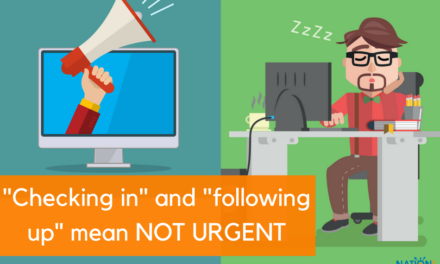There are two forces that keep the heart of a consulting career pumping — business development and client retention. We’ve devoted quite a bit of space to discussing the former and the importance of keeping our feet on the gas even when the ship seems to be sailing itself. However, our hunger for growth shouldn’t come at the expense of our current clients’ satisfaction. It’s a balancing act of keeping these two factors working in harmony with each other.
As we mentioned earlier, current clients are the most financially valuable assets a solopreneur has in their arsenal. Reliable and satisfied customers that are truly devoted to your brand offer incredible potential for long-term value and networking benefit. In this post we’ll discuss the most vital tips for client retention that will help you hang on to your customers, this year and beyond, and keep the good feels flowing all around.
Anticipate their needs
We’ve all dealt with disorganized clients — there is a certain creative chaos that comes with starting a business and many small business owners are in waaay over their heads. They need help and sometimes, as collaborators with these frantic folks, we need to go a little beyond to set them up for success — in fact, it’s usually in our best interest to do so.
To retain high-quality clients who struggle with some minor issues, we need to think about the obstacles that hold them back and if there are some easy ways we can help resolve them.
Perhaps they struggle with remembering meetings or calls
• Set them up with a notification app (Google calendar invites can work wonders).
They can’t reliably manage the daily upkeep of their social media
• Give them a quick screen-share tutorial on Hootsuite or an SMO platform that streamlines this work (and charge them for your time!).
They struggle to keep track of your tasks and their immediate action items
• Send them a quick bulleted summary of your calls after each meeting, with clear instruction for them and deadlines for these tasks (which they can plug into their notification app).
Naturally, if your role is just to design some graphics for a client or do a little writing each month, it’s understandable if things like this seem a little over the top relative to what’s agreed-upon in your freelance contract. However, this isn’t about giving clients more than they are owed — it’s about giving them what they need to make your collaboration a success and a long-term asset to both parties.
You know in your heart of hearts if a client is worth your time. If there’s just a small snag holding back what could be a great long-term relationship, take action — you’ll both be happier.
A little favor every now and then can work wonders for client retention
I want to qualify this point heavily. You will find fierce differences of opinion on this advice and with good reason — a solo who doles out favors without a second thought will wind up broke and under-valued by their clients (ask any web developer who has done their clients just a couple “quick favors”).
I am not talking about giving your contracted work away for free — I’m talking about going above and beyond as an overall person. It can be as simple as educating a client a little on design best practices or recommending a client’s business to a peer. These are little things that a client may never ask you to do, but they make it clear that you are a “real catch” and that your client will not find this high-quality professional relationship in most other contractors they approach.
Chis Latham, founder of financial marketing consultancy, FCS Global, makes a great point of this in his article “Doing Favors for Clients Is Often Worth the Trouble.”
“It’s counterintuitive that performing — for free — tasks barely related to one’s profession should be good for business,” says Latham. “And every advisor must set limits. But the extra care resonates with clients who might get overwhelmed or even exploited without it.”
I do not advise starting off a relationship with a big favor (this can create a bad precedent), but in the case of veteran clients, of whom you are very well-acquainted and trust, this kind of periodic goodwill can significantly raise your value in their eyes and make you indispensable to their operation.
Always look ahead (even when your client won’t . . .)
Almost every client I’ve had over the years has told me in some way, shape or form that they want to grow their businesses . . . however, their actions haven’t always been consistent with this goal. It’s important as a consultant to keep your client’s best interests in mind — even when they themselves lose this focus.
This point is most relevant to the long-standing bedrock clients you’ve had since day one — they’ve done the same thing with you month to month for years now and are complacent. On paper they still “want to grow,” but are not willing to take active steps to do this or spend a little more upfront to make it happen. This isn’t good for anyone. Even if your client is primarily responsible for stagnant results, they won’t see it that way — they will eventually blame you.
When you sense a holding pattern setting in with a client or you notice that they’ve plateaued in some way, you need to proactively assess the situation. Is there just a small addition to your services you can agree on with the client to get a little more traction? If this small change makes a difference, they’ll be more willing to break out of their restricting comfort zone and keep you in an active and growing role.
Keep your clients feeling good about their mission and your work
Obviously, if you do not believe in your client’s success or morality, then your relationship is living on borrowed time anyway. But assuming you share an earned respect for each other, it’s important to take the time to reinforce good relationship dynamics.
If your client does an awesome job on a blog post or video, let them know! If they’ve trusted you enough to try out one of their new products and you love it — give them your honest and thorough feedback. It’s always easier to work with someone who expresses palpable enthusiasm for what you’re doing.
Likewise, sometimes we need to “help” our clients smell the roses on our end. Professional artist and writer Julie Neidlinger explains this very well in her blog, “5 Steps To Make Your Freelance Clients Love Your Writing.” While her advice is writing-focused, the sentiment applies to freelancers of all specializations.
“Your client wants you to give them confidence about your work,” says Neidlinger. “At the beginning, especially, you need to help your client love your work by showing them that you love your work, too. It’s a way of showing them you’re giving them your best, and that you’re not haphazard about their project.”
Add a sentence or two to your delivery email explaining why you made some of the decisions you made on the assignment and why you feel really good about them. Depending on the situation, your willingness to share this work with others will also reinforce this point.
Your clients are special — make sure they know it!
Throughout the service world, we see that a great product is just one piece of the overall customer experience. While quality is the bottom line, can you think of any restaurants or bars you frequent more because of the way you’re treated rather than the caliber of fine dining or mixology they offer? The same idea applies here.
You don’t need to be your clients’ best friend (there can be some real problems if you get too close!), but client retention happens when we show them in small but noticeable ways that we care about their success and happily give them the time of day. Your clients matter — don’t let them think otherwise!











